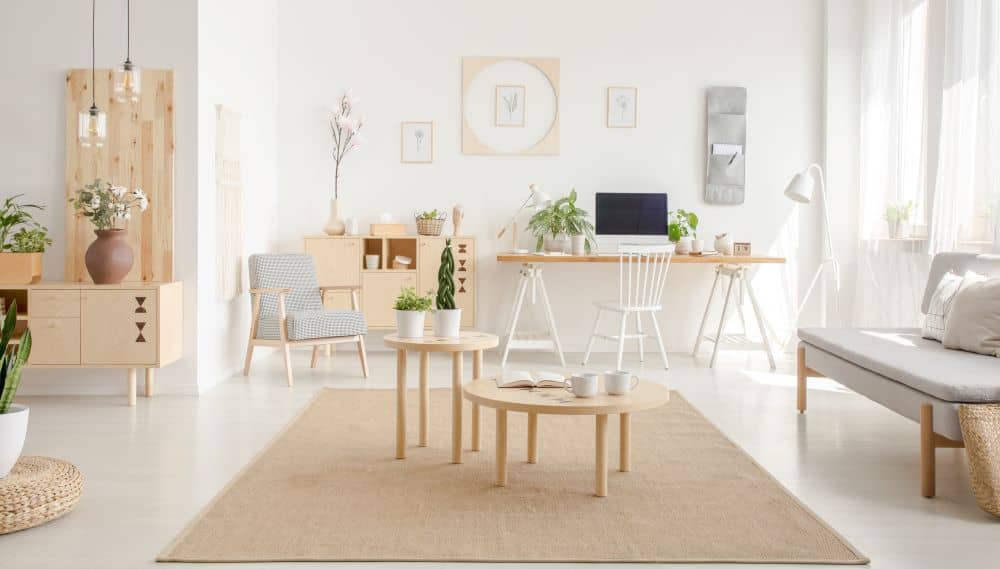Choosing an area rug is a significant decision. Not only from a financial standpoint but aesthetically, you want your rug to enhance the space where you will place it.
The process can seem bewildering, especially if you have not made many rug purchases. Fortunately, we have some expert advice about what you should do (as well as what you should not do) when choosing your next area rug.
Here are Our Tips to Help You Choose the Right Rug:
1. Material Matters
Understanding the type of rug you get based on its material can help you narrow the field when choosing your new rug.
- Cotton – A rug made from cotton generally wears well. It tends to be a bit more affordable than other options, as well.
- Jute – Jute rugs are ideal for high traffic areas because they wear incredibly well and are easy to clean. You can hose off your jute rug when it gets dirty. Jute also brings a very natural and earthy feel to space.
- Synthetic – If you are considering a synthetic rug, you opened the door to a wide variety of colours and styles. Synthetic rugs are easy to care for and are cost-effective solutions.
- Wool – A traditional material for rugs, wool has a soft feel and an elegant look. It wears well and is resistant to stains.
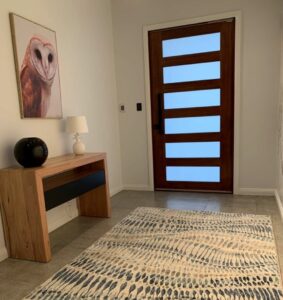
A Bayliss Rug, available at The Online Flooring Store purchased by a happy customer in Hobart, Tasmania.
2. Tips for Measuring
Your measurements are critical for getting the right area rug.
Here are a few hacks to make the process a little easier:
- It is acceptable to round up your measurements if you are dealing with a space that is an odd shape or size
- Save a little effort by measuring the perimeter of the furniture where your rug will go instead of wall to wall
- When measuring for a dining room, choose your rug dimensions based on your table. You will want the table and chairs to sit on the rug, so a rectangle-shaped table needs a rectangle-shaped rug. You can plan on adding one metre of space all the way around.
- If you measure for an area rug in the living room, remember that all of the furniture should touch the rug. However, it does not need to sit on top of the rug. You have the right size rug if the front of your sofa touches it.
- If possible, leave space around the edges of your rug so that it does not look like wall-to-wall carpeting.
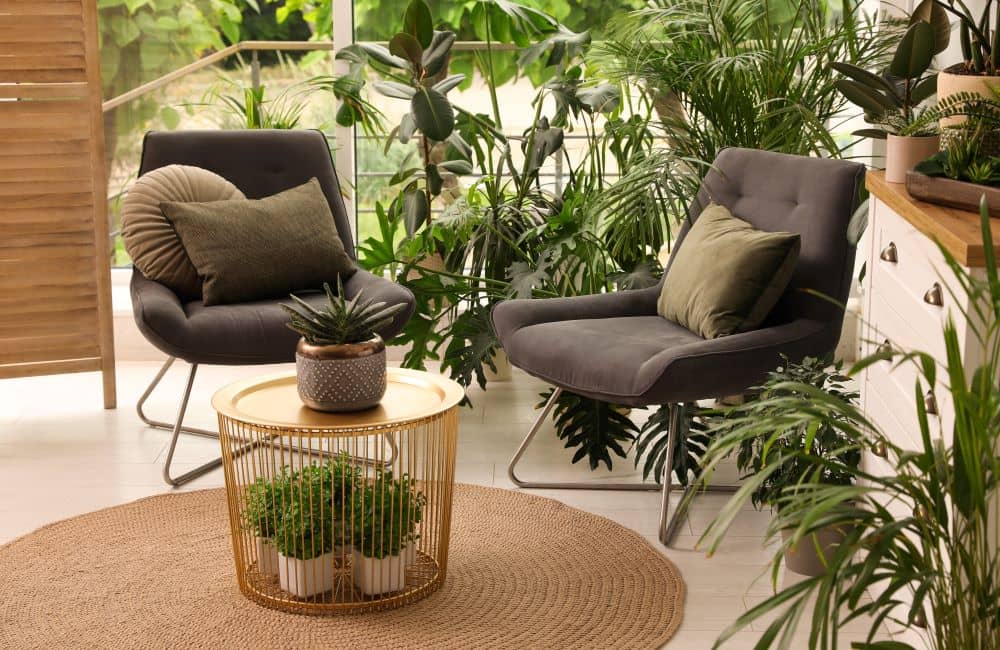

Expert Insights From Raquel Billett
Interior Décor Expert
Here are some quick tips I share with customers to help them find the right rug:
Under the coffee table, the rug should be big enough to accommodate all four legs of the table and allow you to walk around the table while still being on the rug. A good rule of thumb is to choose a rug that is roughly the length and width of the furniture in the space. If you're opting for a rug with a pattern, remember that some of it may be hidden by the furniture.
In the dining room, the rug should extend beyond the chairs in their pulled-out position to allow enough room for people to sit comfortably. The rug should be wider than your coffee table in the living room. A rug can define the lounge space and serve as a link between two lounges.
To balance the living area:
- Leave an equal amount of rug around the furniture grouping and avoid having the rug touch the walls around the room, as this can make it look oversized.
- Don't opt for a small rug if you have a large living area.
- Use the rug to define the space and incorporate your furniture to anchor it.
When it comes to bedrooms, remember that a patterned rug may have parts of its design covered by the bed. Leave some space between the bed and the walls on both sides for a more balanced look, and consider using small rugs on either side or both sides of the bed.
With these tips in mind, you'll be able to find a rug that perfectly complements your space and enhances your décor. Happy shopping!
3. Choosing Carpet Colours
The colour choice is usually quite personal, and blanket generalisations are difficult. Essentially, if you love a colour, then work it into your décor. If you prefer a bit of structure and a colour-coordinated look, top designers follow the rule of 60-30-10.
- Your space should have 60 per cent of the dominant or primary colour.
- Make 30 per cent of your space a secondary colour. Using an area rug in the secondary shade of your choice could be ideal. If your main colour is grey, white or black would be good options to use as secondary colours.
- Designers advise that ten per cent of the colour in a room ought to come from accents or decorations. Things like light fixtures, wall art, or decorative pieces all work well with the accent pieces. The colour of the accent pieces can also fit into your area rug.
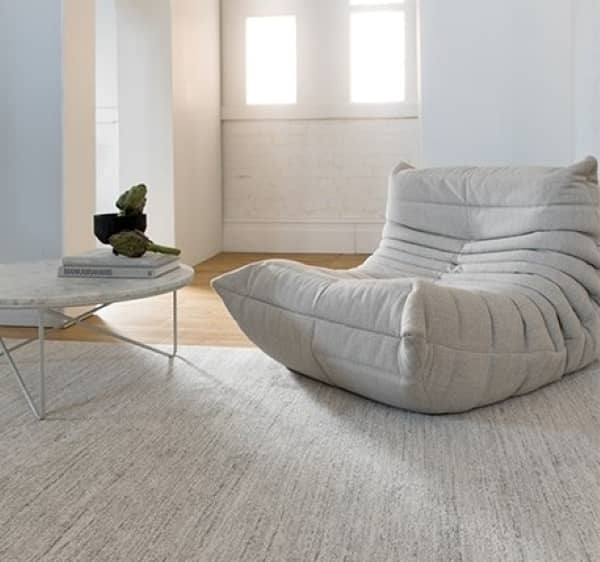
4. Pattern and Texture
Area rugs that feature a lot of texture and colour can add interest to a room. Be sure not to overdo it. Generally, designers will put a strong emphasis on either the walls or the floors. So, if your area rug will be detail-oriented, understated walls will help maintain a sense of balance and avoid over the top styling.
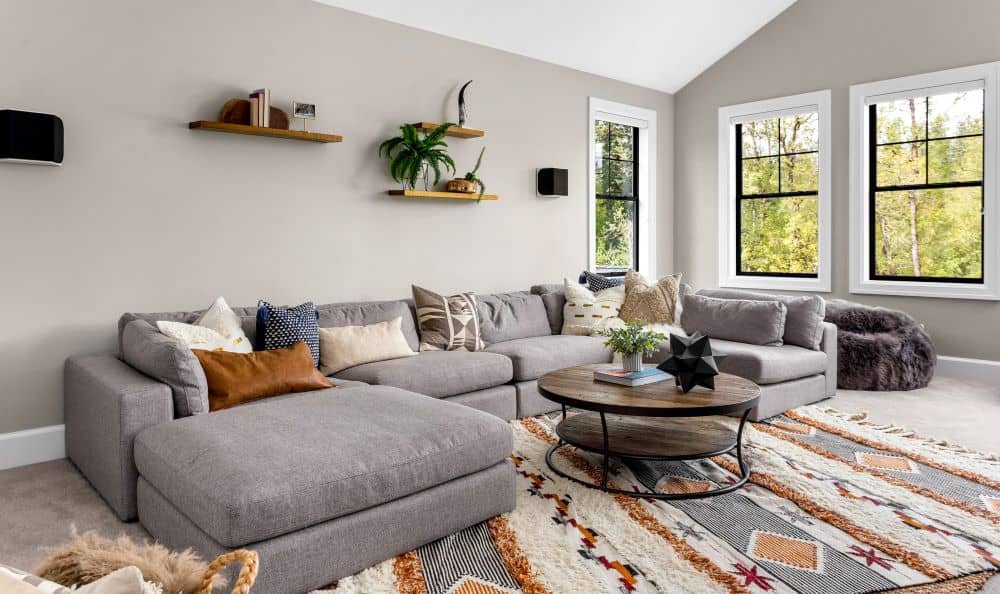
The Three Biggest Mistakes People Make When Buying an Area Rug
When making an important purchase, it is easy to find yourself a bit overwhelmed and eager to just be done with it. While that is an understandable attitude, do not rush buying a rug. You may come to regret your snap decision once the rug you thought was perfect turns out to be much less.
- Size Matters – A common mistake that many people make is believing a small rug is a good idea. This is simply not the case. One of the many vital functions of an area rug is to define the space. A tiny rug surrounded by furniture will look awkward and make the area seem smaller. Deciding on a bigger rug is smart because the eye is drawn to the perimeter, and even a tiny apartment will appear larger with a sizeable rug.
- Measure Twice Purchase Once – Many people set out on their quest for a rug without properly measuring the space where they will put their new rug. As you can imagine, guessing the size of the area rug you need is difficult at best. Before you start rug shopping, take the time to mark out the space where your rug will sit. Then carefully measure the area to ensure your new rug is perfect for its intended space.
- Look Beneath the Surface – Even if you have the perfect measurements and the largest rug for your space, you may regret focusing on only what looks good. Rugs anchor rooms, and as anchors, they are subject to wear and tear. Consider where you will put your new purchase. A gorgeous Persian rug will doubtlessly suffer wear and tear in your living room with pets and children. Likewise, a plush ivory rug will make sliding chairs difficult and see more than its fair share of stains.
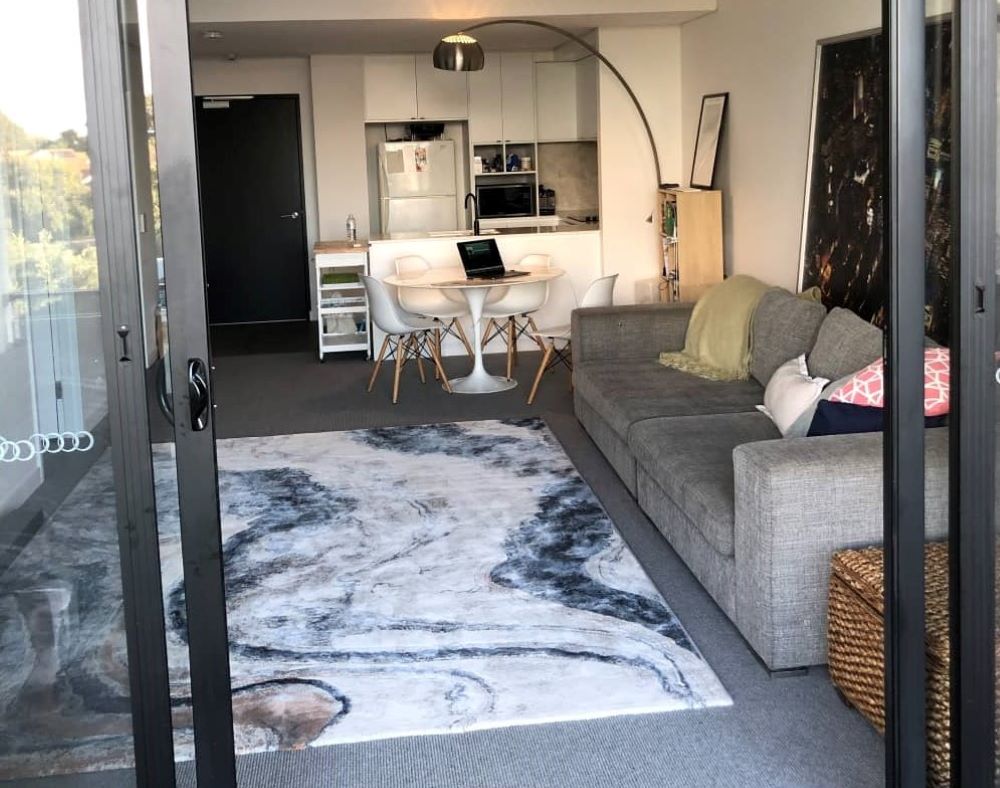
Another Bayliss Rug delivered to a happy Perth client.
If you are not sure of the best type of rug for your space, do not hesitate to ask for guidance from a professional. As you can see, choosing a new rug takes some thought and effort. And there are times when you may need an opinion from an expert. If you would like to know more about our stunning collections of rugs, feel free to reach out to the Online Flooring Store.
Our friendly customer service staff is second to none and can help you choose the perfect rug for your home.



